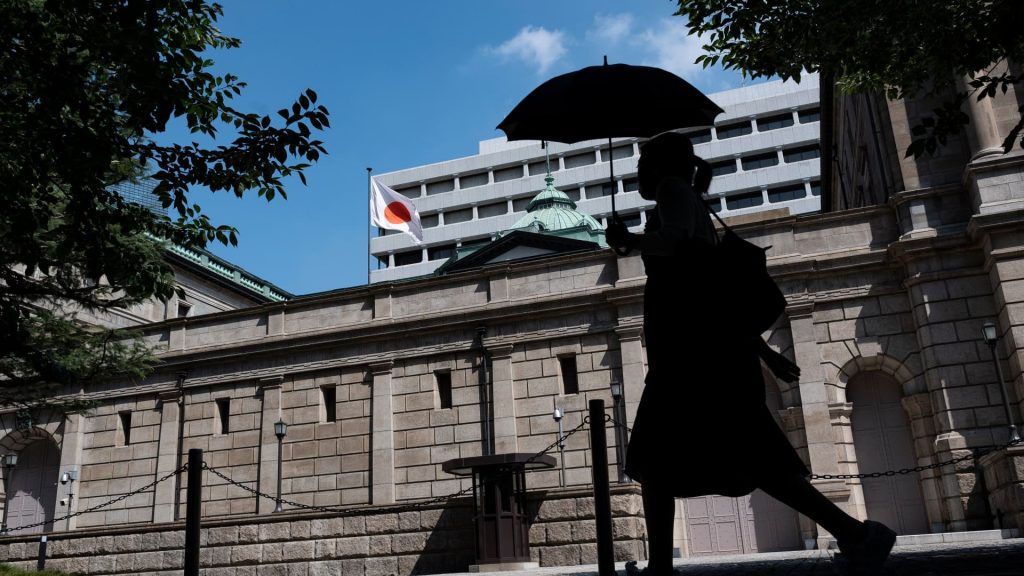The Bank of Japan kept its policy rate unchanged Friday after its monetary policy meeting, holding its benchmark policy rate at 0%-0.1%.
This is in line with expectations from economists polled by Reuters.
While the move was expected, this comes after Tokyo’s April inflation came in lower than expected, with the core inflation rate at 1.6% compared to expectations of 2.2% from Reuters.
The BOJ also said it will continue to conduct bond purchases in line with the March decision. The bank previously said in March it bought about six trillion yen ($83.5 billion) worth of bonds per month in the past.
No comment was made by the BOJ on the yen, which has steadily weakened since the BOJ ended its negative interest rate policy last month and abolished its yield curve control policy.
The currency broke through the 156 mark against the U.S. dollar Friday after the decision, most recently trading at 156.11.
Separately, the central bank also released its second-quarter outlook for Japan’s economy, raising its outlook for inflation in fiscal 2024.
The BOJ now expects inflation between 2.5% and 3% for fiscal 2024, up from 2.2% to 2.5% in its January forecast.
Inflation is then predicted to decelerate to “around 2%” in fiscal 2025 and 2026, the bank added.
The BOJ also downgraded gross domestic product growth forecasts for fiscal 2024 to a range of 0.7% to 1%, down from January’s prediction of 1%-1.2% growth.
Accommodative policy to remain
In light of the outlook report, the BOJ said that moving forward, the conduct of its monetary policy will depend on future developments in economic and price conditions. But it said accommodative financial conditions will be maintained “for the time being.”
The BOJ does acknowledge that uncertainties surrounding these economic and financial developments at home and abroad remain high. But if its forecasts are realized and underlying inflation increases, the central bank said it will “adjust the degree of monetary accommodation.”
This is breaking news. Please check back for updates.
Read the full article here




